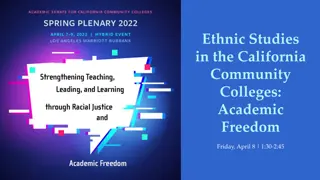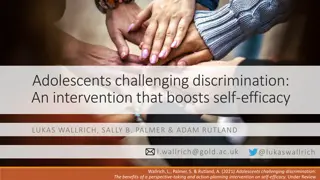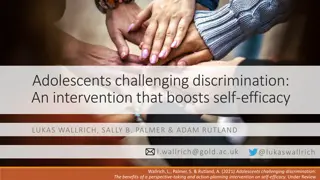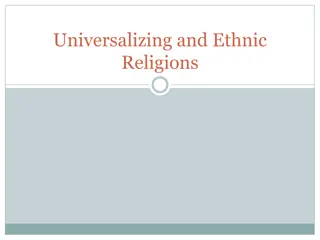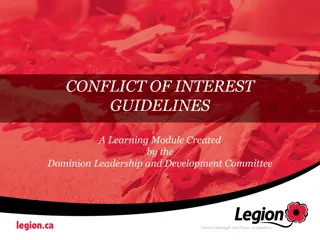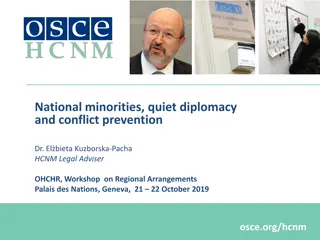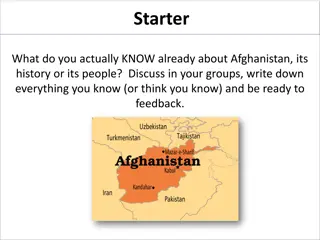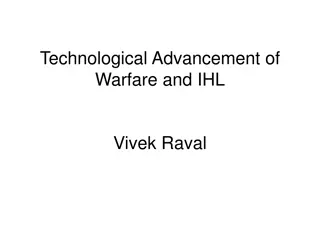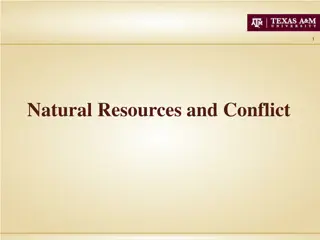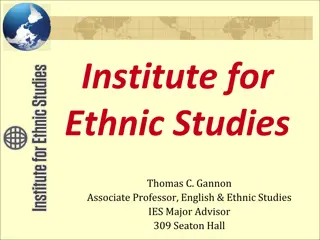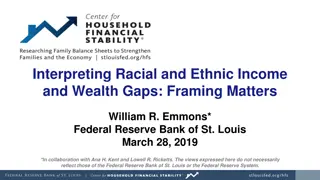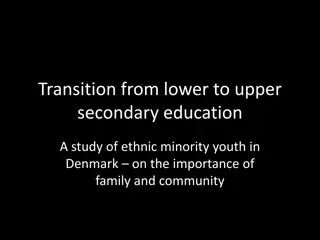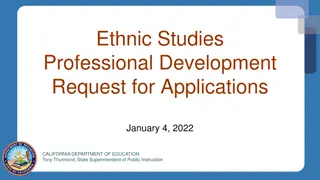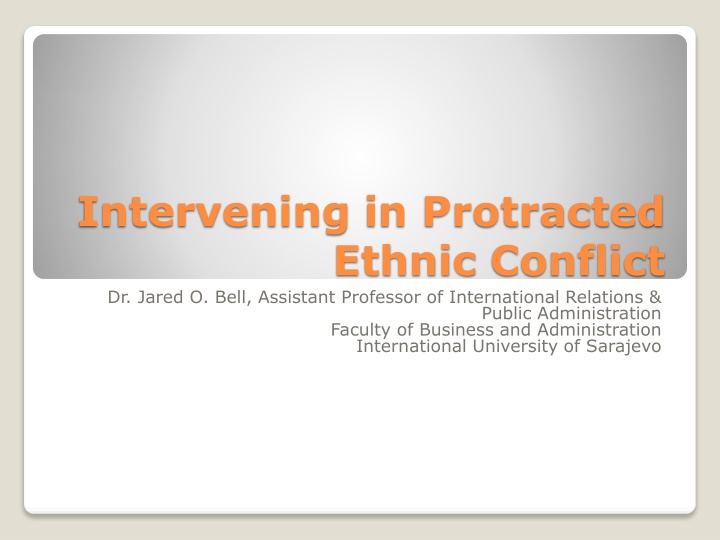
Effective Intervention Strategies in Ethnic Conflicts
Intervening in protracted ethnic conflicts requires third-party mediation, different levels of intervention tracks, and a two-step approach to conflict resolution addressing preconditions and negotiation challenges. Understanding the concept of ripeness is crucial in promoting dialogue and non-violence in conflict resolution.
Download Presentation

Please find below an Image/Link to download the presentation.
The content on the website is provided AS IS for your information and personal use only. It may not be sold, licensed, or shared on other websites without obtaining consent from the author. If you encounter any issues during the download, it is possible that the publisher has removed the file from their server.
You are allowed to download the files provided on this website for personal or commercial use, subject to the condition that they are used lawfully. All files are the property of their respective owners.
The content on the website is provided AS IS for your information and personal use only. It may not be sold, licensed, or shared on other websites without obtaining consent from the author.
E N D
Presentation Transcript
Intervening in Protracted Ethnic Conflict Dr. Jared O. Bell, Assistant Professor of International Relations & Public Administration Faculty of Business and Administration International University of Sarajevo
What might be some ways that we can intervene in ethnic conflicts? Ethnic Conflict Intervention
Third party intervention and mediation Third party intervention and mediation is often needed to break a deadlock. Third party changes conflict structure and allows different pattern of communication. Post-Cold War broadening in scope of third party interventions. Much wider view of timing of intervention. Bottom-up processes and roles of internal third parties and indigenous peacemakers now seen as more significant too.
Third party intervention and mediation Third party intervention and mediation is often needed to break a deadlock. Third party changes conflict structure and allows different pattern of communication. Post-Cold War broadening in scope of third party interventions. Much wider view of timing of intervention. Bottom-up processes and roles of internal third parties and indigenous peacemakers now seen as more significant too.
Levels (Tracks) of intervention and mediation Track I: governmental or inter-governmental representatives. Negotiation, peacekeeping, arbitration, mediation with muscle . (UN, international and regional organisations, governments, international financial institutions.) Track II: unofficial mediators. Conciliation, problem-solving, mediation. (International NGOs, churches, academics, private business.) Track III: building social cohesion and common ground. (Grassroots, indigenous resources and local actors.)
The two-step approach to ethnic conflict resolution 1. Establishing preconditions for effective intergroup dialogue and negotiations (through Track 1 or Track 2 procedures); 2. the negotiation of specific constitutional and other arrangements to reach a conflict settlement. Each of these steps faces its own challenges.
Questions of ripeness Zartman: some political, social and economic moments are ripe for negotiation and dialogue and a move from violence to non-violence; others are not: Parties resolve their conflict only when they are ready to do so when alternative, usually unilateral, means of achieving a satisfactory result are blocked and the parties feel that they are in an uncomfortable and costly predicament. At that ripe moment, they grab onto proposals that usually have been in the air for a long time and that only now appear attractive (Zartman 2002: 19). This moment of ripeness is determined by the contending parties perception of a mutually hurting stalemate (MHS), involving both objective evidence and subjective perception.
Essential criteria for a successful peace accord The protagonists are willing to negotiate in good faith; 1) the key actors are included in the process; 2) the negotiations address the central issues in dispute; 3) force is not used to achieve objectives; 4) negotiators are committed to a sustained process. Darby and MacGinty 2000 5)
Why should external actors care? Because of: their own hegemonic ambitions; concerns for regional stability; sympathy for oppressed groups [or oppressors??]; sense of international responsibility; humanitarianism (Cooper and Berdal 1993 cited in Rothchild and Lake 1998: 217).
International intervention as a problem External actors can be driven by belligerent motives (cp. Gurr 2000); if external actors are biased or lack commitment to enforce conflict settlements, they can exacerbate rather than resolve conflict (Rothchild and Lake 1998); where external actors aim to rush peace negotiations or avoid difficult issues, the conflict is likely to recur (Barnes 2009); peace processes that neglect the conditions or interests of local communities increase dependence on external guarantees for peace (Darby and MacGinty 2002).
International intervention as a problem External actors can be driven by belligerent motives (cp. Gurr 2000); if external actors are biased or lack commitment to enforce conflict settlements, they can exacerbate rather than resolve conflict (Rothchild and Lake 1998); where external actors aim to rush peace negotiations or avoid difficult issues, the conflict is likely to recur (Barnes 2009); peace processes that neglect the conditions or interests of local communities increase dependence on external guarantees for peace (Darby and MacGinty 2002).
Dilemmas of international intervention (for the intervening party) The need to engage in confidence-building vs. efforts to punish particular groups; the politicisation of international intervention; information failures; problems of regional or global organisations to agree on a course of action When to intervene and how

